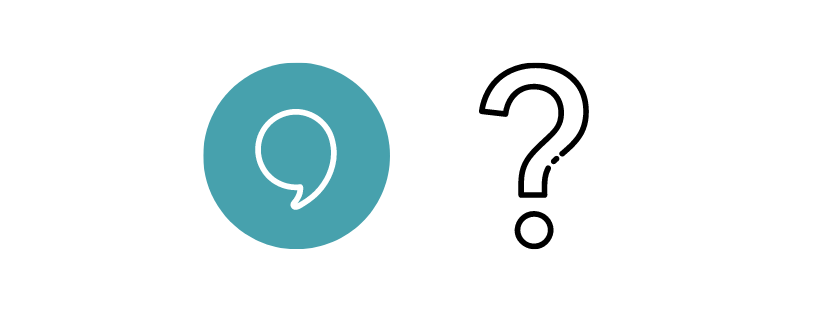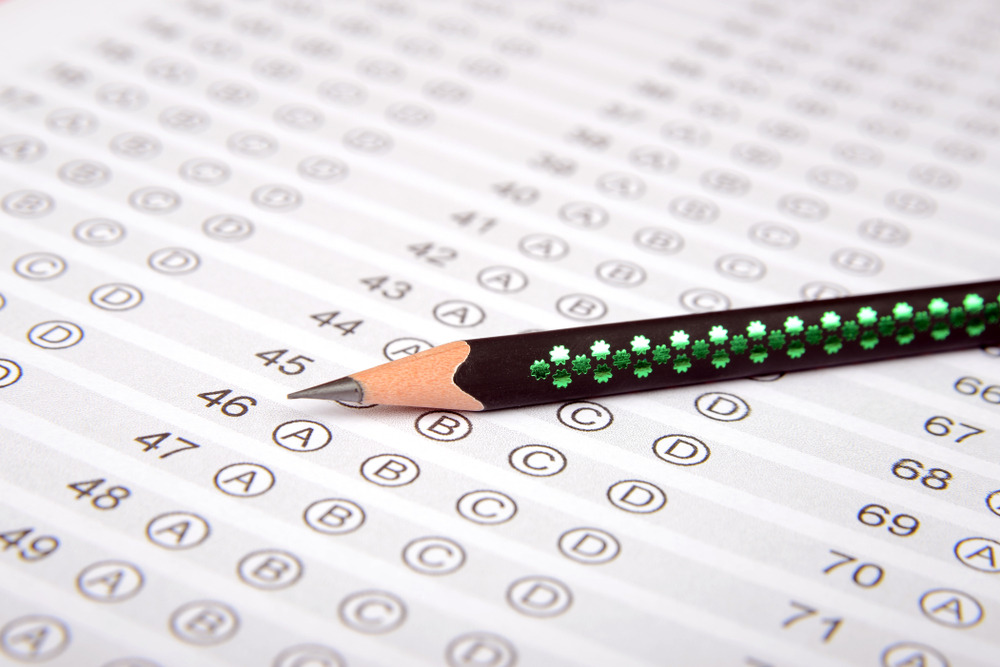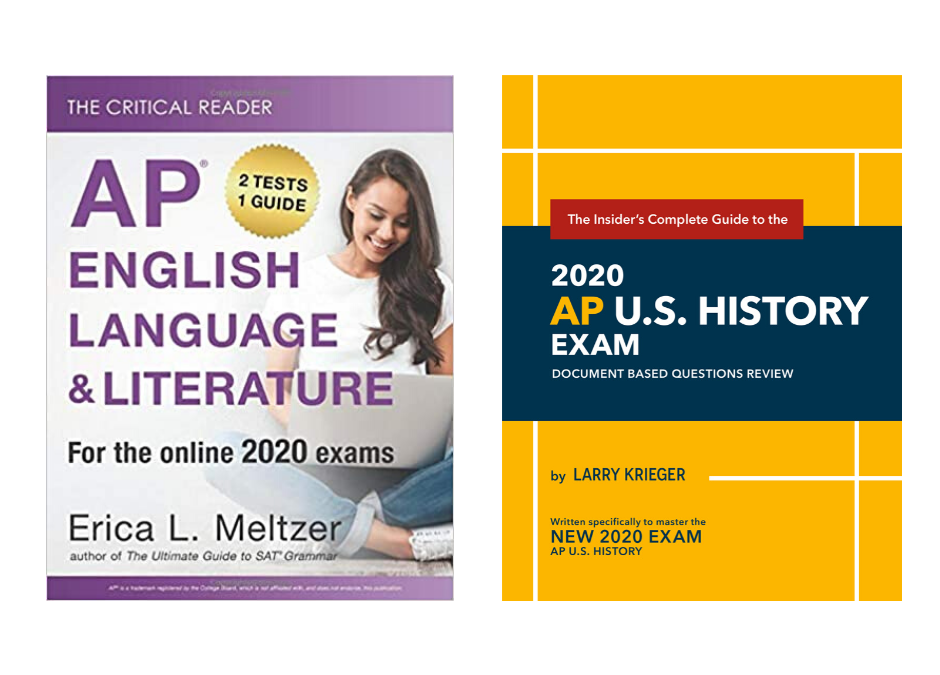
by Erica L. Meltzer | Aug 30, 2020 | Phonics, Reading Wars, The Science of Reading
In a post written back in March, Valerie Mitchell posed the question of why teachers of native English speakers are increasingly adopting classroom activities designed for ESL students. As she pointed out, the fixation on scaffolds in the form of “visuals, vocabulary aids, graphic organizers, etc.” does not make much sense. For native speakers, the point of English class is (presumably) to help them express increasingly complex ideas in more sophisticated ways, not to teach them basic vocabulary in a language they have been surrounded by since birth.
I had no idea that this was such a widespread phenomenon until I read her piece, but once it was called to my attention, I realized that the increasing focus on images could only be the result of the three/multi-cueing approach to reading so often emphasized in the early grades. When children are taught to “read” by looking at pictures cues and guessing what the words say, they grow up into teenagers who “read” by looking at pictures and not paying very much attention to text. Then, because middle- and high-school teachers have little idea of why their students struggle so much with text, and even less of an idea how to remediate the problem, they gladly latch onto any solution that gets students engaged. I suspect that this why graphic novels are becoming such a staple in English classes.
To be fair, this is entirely understandable. After all, teachers are obligated to work with the students they have in front of them, at the level they’re at. And most secondary-level teachers probably cannot even begin to imagine the way many of their students learned (or rather didn’t learn) to read. If the choice is between having students learn something vs. nothing, then the decision to focus on material that’s manageable for students is obvious. The problem goes far, far beyond what any one individual teacher could possibly remedy.
It took an incident a few weeks ago to make me fully aware of the extent to which this is now accepted as a normal state of affairs, though. I was trawling the internet when I came across a Masters thesis on the benefits of using “sophisticated picturebooks” in secondary-school English classes. (Incidentally, this was a Canadian thesis—let me point out that the use of cueing methods is a problem not restricted to the U.S.) Remarkably, the writer devoted almost no space to discussing how actual teenagers perceive or experience the use of such books in class, nor did she investigate any outcomes of their use as a pedagogical tool—the entire focus of the paper was on her personal belief in their importance, and how they might be used.
As the writer put it: “[I]f given a structured strategy with which to analyze images (such as picturebooks), [secondary-school] students will be capable of understanding how pictures provide information in stories.”
Aside from the fact that it is difficult to imagine a normally functioning teenager who has difficulty grasping how images are used to support text, what struck me most was the matter-of-fact way in which the writer accepted picture-based books as an appropriate compensation tool for poor reading skills—there was no evident recognition of, or discomfort about, the fact that a teenager who is so heavily reliant on pictures to “read” is functionally illiterate. The notion that such a student might require intensive remediation as opposed to a band-aid designed to minimize the severity of the problem was absent.
For the record, this is not a question of whether the works discussed in the thesis have aesthetic/entertainment value in and of themselves—this is about adolescents whose reading skills are so stunted that they are forced to rely on images for meaning. An eager pre-service teacher can (almost) be forgiven, however. The real fault lies with the advisors who willingly supervise this type of work; to the universities who permit diplomas to be handed out with their imprimaturs; and to the districts that would hire a person with such distorted pedagogical beliefs and place them in a classroom with struggling students whose real needs they are not even remotely qualified to address.
That’s part one.
The second part involves The New York Times Learning Network.
As someone who’s been involved in the world of education for well over a decade, I’ve been in the habit of checking the Learning Section periodically for a good while now, and I find it impossible not to notice how its focus is increasingly drifting away from exercises involving text and onto ones involving graphics. (As if to prove my point, a recent headline was entitled “144 Picture Prompts to Inspire Student Writing.”)
The Times does also still include article-based activities, but given that this is a major newspaper of record, I think it’s instructive to examine the move towards images because it serves as something of a reflection of/bellwether for general trends in education.
Now obviously, adolescents do live in a socia-media saturated environment, and they are inundated with videos, photos, graphics, advertisements, etc. virtually non-stop. So yes, it is reasonable to try to engage them with images (although whether the NYT can seriously compete with, say, TikTok is another issue). And given the primacy of images in teenagers’ lives, it is important that middle- and high-school students be given the tools to analyze them critically. As Neil Postman pointed out in Amusing Ourselves to Death back in 1986, school should be a place where students learn to step back and study the “frame” through which information is presented to them.
But that is not what’s going on here.
Given the state of American reading instruction, I think that it is important to ask whether the shift away from text is driven in part by the fact that students struggle to work with words—because of poor decoding skills, lack of background knowledge, inability to pay attention, or (most likely) a combination of the three. And nowhere are the consequences of this change exemplified more clearly than in the series called “What’s Going on in This Picture?” moderated by a group called Visual Thinking Strategies.
(A “What’s Going on in this Graph?” feature was recently added as well, but I’m not going to get into that here.)
Aimed at middle- and high-school students, it’s pretty much what it sounds like: students look at a picture of an activity or event—sometimes fairly mundane, sometimes outlandish—and use “evidence” (that is, details from the image) to guess what might be going on.
The point of the exercise is not to help teens understand/analyze how images are constructed or how they convey an idea/promote a message; nor is it even to introduce them to a topic for further investigation. No, the sole aim is for them to figure out what’s happening.
The student responses left in the comments section are usually something along the lines of, “I observe that there a bunch of people looking at something interesting in the sky. I hypothesize that they are doing some kind of project for school. Based on the writing on the sign, I believe that this is happening in a foreign country.” Occasionally, a moderator might intercede and “interpret” a response so as to pretend that something insightful was said.
This is essentially the three-cueing system pushed to its most extreme point: the graphophonemic (letter-based) aspect has been subordinated virtually to the point of elimination. The caption from the article that the image originally accompanied is provided the following day so that students can check their guesses—but really, how many of them are going to bother to follow up?
In short, it is the emptiest exercise imaginable, made even more absurd by the pretense that it is a critical-thinking exercise in “using evidence.” (Call it Common Core meets the three-cueing system.) But this type of thinking distorts what evidence is, and how it works in the real world—in theory, at least.
As I think the term is generally understood, “evidence” is information that is used to support an argument. And technically, yes, students are being asked to make an argument here, namely that the photograph depicts a particular occurrence.
The problem, however, is that at the most literal level, the scene captured in the image is not open to argument—it does depict a particular group of individuals participating in a given situation at a particular time and in a particular place. The purpose of a caption—text—is to convey that information.
In the real world, highly specific journalism-based photographs like these are always accompanied by words—without that context, there would be no way to fully make sense out of the images. There are no generic strategies (e.g., noticing details) that can compensate for the missing knowledge that the text provides.
A picture may be worth a thousand words, but sometimes you need fifty or so just to get what’s going on.
I mean, can you imagine the Times running a page of photographs, unaccompanied by text, for its adult readers and encouraging them to “use evidence” to guess at what they were seeing?
Probably not, because that wouldn’t happen.
Inadvertently or not, what an exercise like this does is give the impression that basic reality is something open to interpretation. It teaches students to focus on their own, often weakly supported or outright incoherent, hypotheses at the expense of reliable sources of information. Moreover, if the exercise is done in a classroom, students will more likely remember their peers’ faulty guesses than the reality. As a rule, whatever gets presented first tends to stick—a phenomenon known as “anchoring bias”—and overriding students’ misconceptions is harder than teaching them things accurately from scratch.
Claims to the contrary notwithstanding, words serve to convey complex and abstract ideas in a way that images simply cannot. Pictures cannot be used to analyze flaws in an argument or make concessions, or discuss nuances in ideas, and it is disingenuous to pretend otherwise.
This is essentially the teenage equivalent of “making meaning.” Just as Ken Goodman’s “Reading Is a Psycholinguistic Guessing Game” theory gave rise to a concept of reading in which children’s personal conceptions of what might be going on in a story were valued above the actual words on the page, so this type of activity gives teenagers the message that their personal interpretation of an image takes precedence over what it actually depicts.
And in these times, that is a very dangerous thing.

by Erica L. Meltzer | Jul 26, 2020 | Blog
The question of when to use a comma with so vs. so that vs. so…that isn’t normally tested on any standardized test I’m familiar with, but I’ve noticed a lot of confusion about it in various people’s writing recently, and so I wanted to address it here.
Essentially, the issue is that while all three constructions involve the word so, they’re actually three different types of conjunctions, and that in turn affects how they are punctuated.
So… (pun intended), here goes:
1) So by itself – synonym for therefore
So is a coordinating (FANBOYS) conjunction that serves to connect two independent clauses (complete sentences). Like the other FANBOYS conjunctions (for, and, nor, but, or & yet), so must follow a comma when it is used this way.
Incorrect: The skin is located at the interface between our body and the outside world so its cells can respond to many different kinds of stimuli.
Correct: The skin is located at the interface between our body and the outside world, so its cells can respond to many different kinds of stimuli. (more…)

by Erica L. Meltzer | Jul 20, 2020 | Phonics, Reading Wars, The Science of Reading
The more time I spend trying to wrap my head around the world of early-reading instruction, the more I find myself becoming wary of the notion that teachers should devote a lot of their time to learning about the science of reading. I realize that might seem like a bizarre and contradictory statement given that so many of the problems in reading instruction stem from ed schools’ failure to provide research-backed training to pre-service teachers, so let me explain.
I had already started writing this piece when I discovered that Mark Seidenberg (author of Language at the Speed of Sight), along with several colleagues, recently co-wrote a paper about this exact topic. Unsurprisingly, they do an excellent job of identifying and clarifying some of the major issues at play. As the authors point out, science can act as a general guide to effective practices in reading instruction, but it cannot actually dictate curricular specifics. Or, as they put it, “reading science is an active, ongoing endeavor, not a canon of findings. Overreliance on simplified accounts of science risks reifying it into precepts that do not incorporate much of what the science has to offer.”
I’m going to back away from that idea for a moment, though, and begin with the idea that much of American education is based on top-down notions of conceptual understanding and application—that is, the idea that once students have grasped a general concept, they will then be able to then be able to apply it in a wide variety of situations more or less automatically. I think that this type of assumption now underpins a lot of discussions about teacher-training and the science of reading.
Unfortunately, this is often not how things work: A student may demonstrate excellent theoretical understanding of a concept but then be unable to apply it in an unfamiliar situation, or even recognize when it is relevant. Presenting teachers with a mass of scientific findings about how reading works, and then expecting them to easily translate those findings into concrete methods for getting a group of squirming five- and six-year-olds to make sense out of lines on a page, without a coherent curriculum (and often in situations where they are required to use a very incoherent curriculum), is both profoundly unfair and wildly unrealistic.
Learning to read isn’t natural, and learning to teach reading isn’t particularly natural either. There are many things that skilled adult readers take for granted that beginning readers do not, and learning how to explain and sequence concepts in a way that doesn’t inadvertently cause confusion is an ongoing process.
This is not to suggest that teachers shouldn’t learn about the science of reading. In fact, I would argue that it’s tantamount to educational malpractice that ed schools don’t require a class in it. (In a rational system, teachers would not be responsible for educating themselves, and the fact that they have little choice but to do so speaks to a deep level of systemic dysfunction.) Reading science is also a fascinating subject, and a skilled teacher who really takes the time to understand certain research may in fact be able to devise more effective methods based on it.
But what teachers really need to learn is how to most effectively teach the greatest number of children to read, as quickly and painlessly as possible. And that is not the same as knowing the science.
As Seidenberg et al. explain, the world of reading instruction is facing what is essentially a translation problem:
Reading science does not come with educational prescriptions attached. Science is one kind of thing (empirical findings, explanatory theories). Educational practice is another (activities that promote learning in realworld settings). Connecting the two is the function of translational research…Our concern is that although reading science is highly relevant to learning in the classroom setting, it does not yet speak to what to teach, when, how and for whom at a level that is useful for a teacher.
I’ve now spent a fair amount of time observing how the science of reading gets discussed on social media, and one of the most recurring questions is, “Is method x aligned with the science of reading,” or, “Does SoR approve of this teaching technique?” These types of questions, while obviously asked with the best of intentions, nevertheless reveal some fundamental misunderstandings about how academic science works, and about how it differs from the kinds of models that dominate in the K-12 education world.
The fact that so many teachers do not become aware of these differences during their training highlights the divide (chasm, really) between schools of education and the mainstream academic world; however, I suspect that some of the blame for this also rests with Common Core.
Since the Standards were implemented in 2010, they have profoundly reshaped the ways in which curriculums are conceived of and described, and what purposes they serve. Teachers are expected to constantly demonstrate how classroom activities are “aligned with” particular standards, and because that approach is so entrenched, it now appears to be the lens through which the science of reading is understood.
The problem is that unlike Common Core—a limited set of vague prescriptions written quickly by a small number of individuals with limited knowledge of K-12 schooling and legally prohibited from being altered—the science of reading is a massive, dense, and unwieldy body of research, much of it still inconclusive, carried out by hundreds of scholars at dozens of institutions over many decades, and primarily published as articles in scientific journals, for the consumption of other academics.
Occasionally there might be a book that breaks out into more mainstream popularity, such as Seidenberg’s Language at the Speed of Sight or Maryanne Wolfe’s Proust and the Squid, but they are the exception rather than the rule.
So to be clear: there is no governing body or committee tasked with putting an official “Science of Reading” stamp on phonics/literacy programs to indicate that they are “in alignment” with the research.
Using a program that’s been slapped with a stamp saying “Science of Reading approved” is not even what this is fundamentally about; it’s a different model, a different mindset entirely.
In an earlier blog post dealing with Lucy Calkins’s sudden (and highly suspicious) foray into teaching phonics, Mark Seidenberg voiced his concern that the “science of reading” label would not only get watered down to the point of meaninglessness, but actually be used to support the kinds of damaging practices that currently prevail in so many classrooms:
[Lucy] Calkins derides the 3-cueing approach but the concept is deeply embedded in her erroneous view of how reading works and children learn, as her document confirms.
It’s obvious that other curriculum publishers and authors will follow Dr. Calkins’ lead in claiming that their products are compatible with the science of reading. For a while now there has been pressure to show that the materials are “evidence-based,” but the term has little meaning because educators have their own concept of what counts as evidence. Soon they will all claim to be consistent with the “science of reading” and it will be equally meaningless unless people look beyond the label at the assumptions about reading and learning the materials incorporate and the methods they employ.
And in the more recent post:
In the absence of sufficient translational research, almost every reading curriculum can claim an equally loose connection to the “science of reading.” The risk of course is that such programs will prove ineffective, not because the basic science was wrong but because the translation was poor.
Given how the educational publishing industry works, this is a very valid concern. Most teachers do not have the time or the inclination to wade through a thicket of scientific terminology in search of a paragraph or even just a few sentences that just might have some application to their work in the classroom. And districts and administrators will inevitably come to rely on publishers’ labels as a convenient shorthand, regardless of their accuracy.
The problem is that to be truly effective, a phonics program must be part of a true structured literacy program and not be combined with practices that undermine it, for the sake of familiarity or convenience or adminstrative preference. A curriculum cannot on one hand contain some explicit, systematic phonics instruction but then also include sight-word lists with words that can be easily sounded out, and/or leveled readers with spelling patterns students have not yet learned (thus encouraging guessing). All the pieces must be based on the same conception of what reading consists of and how it develops, and be used to complement one another.
So how can such an immense body of research be translated into tools for practical classroom use, in a way that isn’t completely overwhelming? The cognitive scientist Daniel Willingham offers a potential way out of this dilemma:
Theory is unavoidable, but…theories make untested (and likely, inaccurate) predictions, which invite ineffective classroom applications. The problem might be solved by teaching empirical generalizations in the context of a model that affords few novel predictions. In other words, it should be the sort of model [that] would be of little interest to scientists. It should account for empirical generalizations that scientists consider central to the field, the findings that would prompt a researcher to say, “well yes, of course.” And the model should predict nothing else.
To some extent, this is already the case; Seidenberg points out that what teachers generally refer to as “the science of reading” in fact only involves a small number of the most established, uncontroversial models. His concern is that because of the nature of the education system and edu-publishing industry, even that kind of narrow focus will be insufficient to prevent misinterpretation of key findings.
That brings me to back to the idea that the label and the knowledge of scientific terminology are not really the point. Provided that an instructor understands—not just gives lip service to, but really fully embraces—a handful of fundamental principles that are consistent with key research findings, it is entirely possible to teach reading effectively without ever learning formal terms like phonological awareness or orthographic mapping.
While arming oneself with the science is obviously necessary when trying persuade skeptical administrators to adopt a structured literacy program, allow me to point out that somehow, children learned to read phonetically for several centuries before the nineteenth-century education reformer Horace Mann deemed letters “bloodless, ghastly apparitions” and ushered in the era of whole-word reading, and before researchers performed the first brain-imaging studies. And over the last few decades, countless parents without the slightest background in cognitive neuroscience have managed to teach their children to read using books like Siegfried Engelmann’s Teach Your Child to Read in 100 Easy Lessons (4.5 Amazon stars with 3841 reviews). Then there’s the Fluency Factory, where tutors with little scientific background regularly do remarkable things with beginning and struggling readers just by using an expertly designed, carefully sequenced program with great fidelity.
For the record, yes, there will always be children who experience truly severe difficulties in learning to read, and for them a higher level of expertise is required. But only a small percentage of children actually fall into that category. This is about the 80% or so of children who need some amount of explicit, systematic instruction, not the outliers.
So all that said, what are the most important concepts that reading instructors need to know? I would propose the following:
1) Letters and letter-combinations stand for sounds and are blended together to form words—essentially, words say what they say because they consist of specific letters written in specific patterns, in specific orders. Sound-letter correspondences must be explicitly taught, beginning with the simplest patterns and systematically moving to progressively more complex ones.
2) Children must be able to hear sounds correctly, and to distinguish between similar sounds (e.g., short “i” and short “e”), in order to consistently match them to letters.
3) Skilled reading derives from the ability to process words—and only words—on a page, in left-to right sequence. Memorizing, using picture cues, and making guesses based on “what would make sense” are not reading.
4) To be able to read with conversational intonation, students should be able to read at around 200 words per minute by late middle school or early high school. By third grade, they should be reading around 150 wpm. If children read too slowly, they will not be able to retain meaning or connect text to spoken language.
5) Learning to decoding phonetically is an immensely demanding cognitive task for many children, so asking a beginning reader to focus excessively on meaning will result in mental overload. As decoding ability increases, more attention can be paid to it.
All of these principles are based on reading science, but they are also practical concepts that form a bridge between the science and classroom methods.
In the hands of a skilled teacher, a program based on these principles is virtually guaranteed to be more effective for a greater number of children than the combination of incidental phonics instruction and leveled readers found in the average balanced literacy classroom. But to reiterate, the science—at least as it currently stands—cannot dictate the specifics of the implementation.
Now, in addition to the above points, there are certain pieces of knowledge and pedagogical skills that teachers must also possess. Some are related to the science, others less so, but they are all of immense practical importance.
On the knowledge side:
Individual sounds
Reading instructors must be able to correctly pronounce all 44 main English sounds, and to say consonant sounds without an unnecessary schwa (c-a-t rather than cuh-a-tuh). They must also be able to demonstrate subtle differences between similar sounds; recognize when students are having difficulty discriminating between them; and know how to explain/demonstrate the distinctions.
Pronunciation Patterns
English is filled with letters that make different sounds depending on the context in which they are used. For example, it is insufficient to teach only that “c” makes a /k/ sound; rather, children must learn that “c” also makes an /s/ sound when it is followed by “e,” “i,” or “y.”
Standard and non-standard spelling patterns
Many sounds, particularly long vowels, can be spelled many different ways, and teachers must ensure that all of the spellings are introduced. They should also be able to point out which patterns are common and which ones are less so.
Ability to analyze spelling to detect difficulties relating spellings and sounds, and to distinguish between sound-based misspelling and phonetic misspellings.
A child who spells cousin as casin may have trouble distinguishing between short “a” and short “u.” On the other hand, a child who writes akshun instead of action perceives the sounds correctly and is merely attempting to trancribe the word literally.
On the pedagogical side, teachers must be able to:
Distinguish between actual reading and reading-like behaviors
A child who can recite a text may be able to decode it or may have simply memorized it. Some children can get very far on memorization, and teachers need to be both willing and able to probe past the surface.
Avoid over-explaining concepts, or discussing concepts that have not been explicitly taught.
Explanations for beginning readers should be kept as short and simple as possible, and no information that has not been directly taught should be assumed to be known. Otherwise, children will become confused.
Pace lessons at an appropriate speed.
If a lesson is too slow, students will get bored and stop paying attention; too fast and they will become frustrated and be unable to absorb the material.
Limit the number of new concepts introduced at a given time, and provide sufficient review.
Children’s working memories can absorb only a very limited amount of new information at a given time. Instruction that focuses on one or two concepts is therefore more effective than instruction that address many concepts at the same time. In addition, material must typically be reviewed multiple times and applied regularly in order to stick.
Observe students closely and objectively, and resist putting words in their mouths.
Teachers sometimes gloss over student errors with “helpful” statements like, “You really meant to say pound instead of pond, right?” While well-intentioned, these exchanges cause gaps in understanding to be missed, with the result that gaps in children’s knowledge are not addressed.
Stop at every mistake a child makes in one-on-one reading, and teach them to correct it.
If a text is at the appropriate level, there shouldn’t be more than 3-4 errors in a given sampling. Ignoring errors gives children the message that reading accurately isn’t that important, a belief that can create serious comprehension problems down the line. Difficulties with sound-letter correspondences must be addressed as soon as possible if children are to achieve fluency.
These kinds of classroom behaviors are not really within the province of science, but they are key elements of the translation Seidenberg refers to. Even the most impressively structured literacy program will have its effectiveness reduced if a teacher cannot do them consistently.
The upshot is that reading must be taught in a way that is based on, or motivated by, scientific finding, but it in the classroom, the actual science can only go so far. That’s why I get concerned when the knee-jerk response to any question/comment/suggestion about classroom practices is, “What does SoR say?” or “Well, SoR doesn’t say anything about that.” The fact that the efficacy of a particular classroom practice isn’t explicitly spelled out in the research doesn’t necessarily mean that it isn’t a good idea (or a bad one).
Beyond a certain baseline level of consistency with the science, the question should really be, “Does this activity/method help children become better readers?” Ultimately, that’s what matters—not how many books one has read, or how much jargon one can spout, or how many webinars one has sat through. Reading instruction has been gotten wrong for so long, and in so many ways; the stakes are too high for that to keep on happening.

by Erica L. Meltzer | Jul 15, 2020 | Phonics, Reading Wars, The Science of Reading
When the most recent set of scores from the NAEP (National Assessment for Educational Progress) were released in 2019, the results for Reading were dismal: only 35% of fourth graders were rated Proficient or Advanced, whereas a whopping 65% were rated either Basic or Below Basic (up from 63% in 2017). For eighth graders, the results were slightly worse: 34% percent Proficient/Advanced vs. 66% Basic or Below Basic (up from 64% in 2017).
Obviously, these scores do not paint a particularly encouraging picture of American elementary and middle-school students’ reading skills.
One of the major criticisms the NAEP is that the score ratings do not align—and are not intended to align—with grade levels. For example, a student reading at the Proficient level is actually reading above grade level (has “demonstrated competency over challenging subject matter”), whereas one rated Basic is reading somewhat below (“partial mastery of fundamental skills”). And to be fair, the test itself is fairly challenging.
But crude and controversial a snapshot as the NAEP may be, the scores align remarkably well with another set of statistics, namely those released by the International Dyslexia Association in regards to the percentage of children who require particular amounts of explicit, systematic instruction to learn to read. Depicted by the Canadian reading specialist Nancy Young (https://www.nancyyoung.ca) in a popular infographic known as “The Ladder of Reading,” the statistics indicate that approximately:
- 5% of children learn to read without instruction
- 35% need only broad instruction
- 40-50% need a moderate amount of explicit, systematic instruction
- 10-15% need prolonged instruction, with extensive repetition (dyslexia)
Broadly speaking, these four groups can be subdivided into two larger ones: those who need little to no instruction (40%) and those who need more of it (60%)—and that, in turn, runs almost exactly parallel to the NAEP Proficient/Non-Proficient breakdown.
In fact, the NAEP figures over time reflect exactly what one would expect from a (non-)system based largely on the falsehood that reading is a natural process, and that children will “just pick it up on their own” if given enough time: the natural readers learn to read well, and the non-natural readers don’t.
To be clear, this correspondence does not prove cause-and-effect. It is a general correlation, if quite a striking one, and a very large-scale study would be required to establish such a relationship. But given the generally haphazard, unsystematic, and poorly sequenced manner in which American children are taught to read, it does nevertheless suggest that the children who are learning to read well are primarily those who would learn to read more or less regardless of what program they were given.
Worringly, the discrepancy between the two sets of figures runs in the direction of non-proficiency. Assuming the breakdown represented by Young is accurate, around 5% of children who require only broad instruction to become competent decoders still do not comprehend at a particularly high level. Unfortunately, that is hardly surprising either: once children have learned to decode competently, around third or fourth grade, reading proficiency largely becomes a reflection of vocabulary and background knowledge. If schools are de-emphazing subject knowledge in favor of reading-based instruction/test prep centered around the kinds of empty formal skills on which Common Core is based (identifying main ideas; comparing and contrasting; inferencing), then students are being deprived of the knowledge necessary to become strong readers. And the more years students spend in this type of vapid, random non-curricululm, the more pronounced the knowledge gaps become.
As Chalkbeat reported:
A new study, released in April [2019] through a federally funded research center, shows that states that changed their standards most dramatically by adopting the Common Core didn’t outpace other states on federal NAEP exams. By 2017 — seven years after most states had adopted them — the standards appear to have led to modest declines in fourth-grade reading and eighth-grade math scores.
“It’s rather unexpected,” said researcher Mengli Song of the American Institutes for Research. “The magnitude of the negative effects tend to increase over time. That’s a little troubling.”But the results are not getting better over time, according to Song’s research, so it’s hard to pin the findings on bad implementation.
That leaves Song puzzled. “I don’t have a good hypothesis for why the effects actually grow over time,” she said. “That’s something I didn’t expect.”
Song may be unable to offer a hypothesis, but here’s mine: in a 1986 paper, the researcher Keith Stanovich described the “Matthew effect” in reading, a phenomenon named after the Bible verse stating that the rich become richer while the poor lose what little they have.
Essentially, knowledge is “sticky”: the more you know, the easier it is to assimilate new information (because it can be connected to what is already known), creating a positive feedback loop. On the other hand, the less you know, the harder it is to absorb new information because there is nothing to connect the knowledge to. Thus, gaps that may initially be minor or moderate become larger over time. And that is precisely what is happening now.
Indeed, the Reading-score decline between 2017 (37% Proficient or Advanced in fourth grade; 36% Proficient in eighth) and 2019 (35%/34%) suggests that something on the vocabulary/knowledge side is also going in the wrong direction. Only those in the Advanced category made gains.
As E.D. Hirsch explains in The Knowledge Deficit:
Early oral language enhancement plus the systematic teaching of enabling knowledge are the keys to later gains in all academic areas, and also to narrowing the achievement gap beween demographic groups. It is in early language learning that the Matthew effect begins to take hold. Those who know many words and who possess the knowledge to comprehend what they mean will learn more words and world knowledge later on, while those who know few words in early grades fall further and further behind in later grades.
The key phrase here is “systematic teaching of enabling knowledge.” Simply giving children random passages of so-called “informational text” (penguins one day, George Washington the next, perhaps solar panels the day after that) does nothing to help them develop a solid base for navigating the written world.
If knowledge is to be retained, it must be retrieved, applied, and explicitly connected to other knowledge in a structured way, over an extended period. But what is happening knowledge-wise in the older grades is the equivalent of what all too often happens in the teaching of phonics: “g” may be taught as a hard sound (game) but not a soft one (edge); “ee” and “ea” may be taught incidentally as the long “e” sound in a particular lesson, with no mention of the fact that there are six other ways the sound can be spelled, and without follow-up practice in additional lessons or guided application in writing.
Although the Standards as such have faded from public view, it is important to understand that they are still exerting an enormous influence over American public education. Even states that have nominally moved away from them have in fact just relabeled them in order to avoid controversy while leaving them intact more or less verbatim.” So both today’s fourth and eighth graders have spent their entire school careers in a system dominated by Common Core, with knowledge gaps that start out small getting continually overlooked and gradually spiraling into something that leaves students at a serious disadvantage for years and perhaps even decades to come.

by Erica L. Meltzer | Jul 11, 2020 | Phonics, The Science of Reading
The following guest post was authored by public-school teacher Valerie Mitchell.
Some learned to bake sourdough bread. Some took on home improvement projects. However, when it came time for me to choose a pandemic project, I decided to be a precision teacher. Unfortunately, it is not Instagram friendly, so I will simply write about it.
Let me introduce myself. I am a seasoned teacher with thirteen years in the NYC public school system with licenses in French and ESL. In fact, according to the NYC ratings system devised by the infamous Charlotte Danielson, I am even considered a highly effective teacher. I have also had skin in the game long enough to watch the DOE follow many fads, particularly the fad of big data. In fact, I bristle every time a supervisor asks how data informs my teaching. Why? Because I always considered teaching to be an artform – kind of like jazz – more Miles Davis than BF Skinner. So why would I learn a style of teaching associated with a man that some say put his own child in a box?
Like any relationship – it’s complicated. It also involves the baggage you bring to it, and I have some serious baggage. The shame of educational failure is something that haunts me from my own childhood. My first-grade teachers were hippies. My progressive school was somewhat of a cross between an ashram and an elementary school. We had goats in the back yard, yoga classes, and as an added bonus they taught me to play Blowing in the Wind on acoustic guitar. Unfortunately, they never explicitly taught me to read. I distinctly remember when Reading Time was announced. They would take me to a bookshelf filled with children’s books. I vividly remember being confused, and for the life of me could not understand why these nice hippies would not tell me what to do with these little books. To placate them, I would pick one up and stare at the pictures until Reading Time was declared over, and I could finally go back to the main purpose of school – singing more Dylan songs! The following year we moved, and I was put in a public elementary school. Here, my parents were given the unfortunate news that I was a seven-year-old illiterate. They immediately went to the Ed School at the University of Miami and found someone to catch me up. I do not remember exactly what the tutor taught me, but I do have a hazy memory of an elderly woman with a brooch. What my little girl-self did understand was that I was moving rapidly from the worst reading group to the best in the lightning speed of Mercury Morris. Yes, you guessed it, I was finally a Dolphin, that coveted 2nd grade reading group named after the Miami Dolphins during a winning season. I guess it was my winning season too.
Oddly enough, history repeated itself. My son experienced reading problems as well. When his first- grade teacher told me he was falling behind, we did a rinse & repeat. We spent the summer with my parents in Austin, and this time the University of Texas found us a literacy expert – newly minted from their Ed School. My son worked diligently, so did the tutor. Except that when we returned, he continued to free fall in school. As his elementary school could not get him to read on grade-level either, they immediately made it clear that it was neither their fault nor his – just an unfortunate roll of the biological dice. According to the child study team he had “processing problems” and ADD. In fact, one tutor that I paid a fortune to, told my son point-blank that his brain worked differently than other children’s so he should not feel bad about his reading difficulties.
So what happened? How did two struggling readers from the same family tree get two completely different results. The resemblances are striking. In both instances, it was caught early. In both instances, the parents sought advice from a respected university. In both instances, the parents were willing and able to get help for their child. But unfortunately, in the second instance there was no elderly lady with a brooch to come to the rescue.
Here are my two working theories.
- Theory Number 1: The elderly lady with a brooch might have taught me phonics. As for my son, I mostly observed the tutor use Texas’ standardized tests to practice with, as well as many vocabulary exercises – I never saw phonics. In fact, I recently looked at UT’s education site to see if they train teachers in phonics, and I could find no classes whatsoever on their website.
- Theory Number 2: There has been a sea change in educational philosophy cultivated by the psychological community. Invariably when a child struggles to read the onus tends to be taken off the teacher, and the school recommends neuro psych tests. In the case of my son, I was told that he had ADD and processing problems. Essentially the experts insist on accommodations rather than remediation. At the time, I remember being confused, as my own experience led me to believe that his problems could be remediated like mine were over thirty years ago. When I voiced my concerns to the principal who flaunted a Harvard PhD (Guess what: Harvard’s Ed School does not teach phonics either – hey but who’s counting Ed schools?) she was quite condescending, almost pitying of my predicament, and seemed down-right confused that I was not eager to get accommodations so he could keep up with the others. In fact, to this day, I find the scenario a bit like the story of the chicken or the egg. Is the manifestation of poor reading a result of poor teaching (i.e., nurture), or are we encountering a brain that simply isn’t well wired to match sounds and letters (i.e., nature)? Since there has been an explosion of processing diagnoses in the past ten years, I tend to align myself with the former explanation.
But let’s leave my theories aside and return to my son. It is seven years later, and I happened to meet a woman who had just done a training at a precision teaching school called Morningside in Seattle. She was looking for a guinea pig to finish her certification. After evaluating my son, she told me the only thing wrong with his brain was that he had never been taught phonics. Had I not experienced my own struggles with reading as a child, I might have written her off as a crackpot (she had no official teaching credentials) and continued to spiral down the road of Special Ed experts. Instead, I listened. She explained that mapping sounds to text in the brain essentially allows you to become a fluent reader, and automaticity is key. She prescribed an intense study of phonics; however, his remediation took much longer than mine (I was seven. He was thirteen.) Eventually the educational nightmare came to a slow-moving halt.
Clearly all this baggage leaves me bitter, and to some degree unable to move on. Why? Because I am a high school French teacher. That’s why! Around the same time my son’s educational challenges became manageable, I was given the lower levels of French to teach. These lower level textbooks have instructions in English, and I often ask students to read these instructions out loud. Often, I am aghast to hear them mispronounce easy words, skip lines, and read without any sense of prosody — all hallmarks of serious reading issues which remind me of my son. As I began to research these issues, I got seriously hooked on the science of reading – particularly phonics, direct instruction and of course precision teaching. I had never forgotten how precision teaching turned my son around, and I really wanted to see it in a more structured environment. Since Morningside was in Seattle, I set my sights closer to home and planned on making a field trip to the Fluency Factory in Massachusetts.
Then the pandemic hit. I knew lots of young children were going to suffer serious deficits. In fact, reading scores were already falling. The 2019 NAEP study had lower reading scores for 4th graders compared to 2017 with only 35% of students reading proficiently. Let that sink in for a second. That means MORE than half of 4th graders are not reading proficiently, and if you think the measures get better with 8th graders – think again. As a once failing reader myself, those statistics shook me to my core. Then it hit me! Here was a project that could get me through a tedious pandemic summer i.e. tutoring a child using precision teaching. I spoke with Richard McManus from the Fluency Factory, and he generously agreed to train me in this style of teaching. This was my way of paying it back to the precision teacher who helped my son years ago.
After some intense study over zoom and hours of practicing phonemes on my own, McManus gave me the go-ahead to find a guinea pig and start tutoring. If the NAEP study was correct, at least 1 out of 2 children on my block were not reading proficiently, and I was going to find one. Lo and behold the first family I spoke to had a child entering 6th grade in the fall who was reading at a 4th grade level. Her mother is a nurse who works the night shift at a local hospital. She gladly accepted my offer for free tutoring as long as we worked outside on the stoop due to Covid precautions. Let’s call the child Carla for privacy purposes.
During the initial assessment it was apparent that Carla was bright, hard-working and in my humble opinion had no learning disabilities. Here are my observations from that first day:
- She was never taught to properly grip a pen causing her handwriting speeds to be at a slow 90 wpm. She also never learned cursive. This can impede students later when writing in-class essays and taking notes, as they will lack the necessary speed to keep up with their thoughts.
- During read-alouds she read mechanically and stumbled frequently. She read at 110 wpm – ideally reading should be at the same speed as ordinary conversation which clocks in at 200 wpm. If reading is too slow, it impedes comprehension and students lose the thread of the narrative making comprehension difficult.
- When shown phonics sheets she had no idea what they were or how to pronounce the sounds. It was clear she was taught whole language. Students such as Carla who have not had adequate exposure to systematic phonics do not develop the orthographic mapping necessary to read fluently.
Clearly, she was suffering from what I call dysteachia and would not be too much of a challenge for a newbie.
The precision teaching folks are convinced that every child can learn if lessons are tailored to them and they receive enough practice to gain mastery. In fact, they take on all kinds of challenges: dyslexia, autism, English Language Learners, ADD, processing problems etc. with an admirable doggedness. This is a pragmatic educational realm where problems are remediated, not accommodated. The linchpin in this method is consistent data keeping. Each skill is practiced then timed for fluency, and students do not move on until the skill is mastered. I learned to use the Standard Celeration Chart and marveled at the purity of this kind of data driven teaching. Finally, I understood what meaningful data is, especially after years of seeing grade inflation at my own school due to measures such as “class participation”, “group work” or “project-based learning”. Here there are no points for good behavior, no homework to be copied and pasted from Google, or groupmates to exploit. It is just me, the student, the skill that must be mastered and my timer. I know it sounds clinical when compared to a blissful six-year-old singing Blowing in the Wind; but it gets extraordinary results.
These results are not lost on Carla who arrives for every session with great enthusiasm. So far, we have done 10 sessions, and I am astonished at her progress. Here are the four skills we have been practicing together:
- Say & Spell: These are high frequency words that must be read then spelled with a goal of 200-250 words per minute. On her first session she did 102 wpm. On the tenth she did 187. The first day I was surprised at how clumsy she was at rapidly identifying letters; however, by the tenth session she was attacking these same letters with gusto.
- Sound Fluency: These are phonics drills. We review a series of sounds until she is confident then we complete timings. Day #1 Carla read sounds at 48 wpm. Day #2 she clocked in at 66 wpm. For the moment, this is her usual pattern. It takes two days for her to master each new series of sounds. Carla’s accuracy during these drills with unfamiliar phonemes is remarkable. She memorizes easily and is sharp as a tack.
- Word Fluency: These work on the same phonemes from the previous drill; however, now they appear in a series of words read in isolation. On Day #1 she did 60 wpm. On Day #10 with far more complex words she clocked in at 94 wpm
- Story Passages: These passages are from a decodable reader. They allow students to practice sounds they have already mastered in narrative form. Our practice sessions involve getting her to model my prosody before timings, as well as reviewing sounds and vocabulary from the story. Day #1’s reading was at a 110 wpm, and it was quite stilted. Day #10’s reading was at 147 wpm, and the quality of the reading was astonishing. It was no longer hesitant, and she now pauses at the appropriate punctuation. The other day when asked if she thought she made progress she yelled: “Oh my God, I don’t stop at every word now!” Subsequently, these reading sessions have made me ponder the concept of fluency, as it is clearly much more than speed. In fact, as her decoding skills increase in speed, she exhibits much more enthusiasm for the stories themselves. In other words, reading is enjoyable now that the cognitive demands have become more automatic.
All in all, there is an elegance to the materials and the method. Clearly this learning style is structured and systematic, and Carla knows exactly what is expected of her. She also knows that it is attainable, and she enjoys monitoring her progress with me. Any fears I may have had about Carla’s creativity being destroyed or anxiety created by these timed tasks were washed away. By the third session, Carla began confiding in me how much she hated school because she could not read as well as the other students, and it was like a weight had been taken off her. A few days ago, her mother texted to thank me, as she noticed a happier, more confident child.
Although I do not have a sourdough bread for my Facebook feed, I have accomplished a few things: an hour’s respite to a frontline worker, a gift of literacy to a child who did not have the words to explain how her school was failing her, and a fascinating educational experiment that I am only just beginning to understand.

by Erica L. Meltzer | Jul 5, 2020 | Blog, College Admissions
Over the past few weeks, the test-optional dominos have continued to fall, with Harvard grudgingly deciding to consider applications from students who have faced exceptional obstacles in taking the SAT or ACT, and Princeton even more grudgingly following suit. As of now, the Ivies seem pretty clear about the fact that these are one-year policies only, and that applicants applying in the fall of 2021 and beyond will be expected to take the tests as usual.
At other other selective colleges, however, this year’s policies are part of a multi-year test-optional trial period, and so I think it’s worth taking a hard look at the implications of these policies in a non-Covid context, and to ask who really benefits from them. (more…)

by Erica L. Meltzer | Jul 3, 2020 | Phonics, The Science of Reading
Because fluency is among the most misunderstood aspects of reading, I’d like to offer up some clarification on a few key aspects of this skill.
First, one of the most common misunderstandings about fluency is that it’s only a matter of speed. The reality, however, is a bit more complex: speed and fluency are related, but they are not precisely the same thing. In reality, speed is a result of fluency, not a goal in and of itself.
By definition, a person who reads very slowly/haltingly, and who continually stops to guess at unfamiliar words (a really big problem) or to sound them out (better, but still a problem), is not a fluent reader. The speed issue, however, is a result of the poor decoding skills. If a child in one of these categories were simply urged to read faster, without having their underlying deficits addressed, they would not magically become a fluent reader. Instead, they would continue to stumble, misread words, guess, etc.; they would simply do so more quickly, and probably become very frustrated in the process.
Second point: fluency is not about teaching children to speed-read. 200 words per minute—the speed at which skilled adults typically read—might sound very fast, but that’s actually the rate at which most people talk. (And in some places, they probably talk even faster).
So fluency involves reading at the speed of speech—essentially, it’s the point at which decoding ability meets speaking ability. That in turn permits conversational intonation (prosody)—the element that makes skilled reading seem so natural.
This is where timing comes in, as a tool for progress-monitoring. When a student’s progress is slow and incremental, it is not necessarily obvious just how much they’re improving from session to session just by listening to them read. Short (30-60-second), frequent, low-pressure timings provide objective feedback about whether things are moving in the right direction. They also reinforce the idea that speed is an important component of reading—not just something that gets tacked on at the end, after one has learned to sound out words.
To be clear, this type of low-stakes measurement, done in a safe, supportive environment, is far, far less psychologically stressful than the shame and humiliation that accompany a child’s self-identification as “a bad reader.” If adults are matter-of-fact and non-judgmental about the timings, then children will be as well—even if they’re anxious at first. Often, they come to enjoy them and look forward to the opportunity to beat their personal bests.
To return to my earlier point, however, I think that the impression given by a person who can read accurately with conversational speed and intonation contributes to the false belief that reading is a “natural” skill. When all the pieces are working seamlessly together, things seem very easy and very automatic. And for the skilled reader, that is in fact true.
But the surface appearance hides a much more complicated reality, namely that “reading” isn’t really one single skill—even though it’s typically (and unfortunately) treated that way—but rather many sub-skills that get combined into a whole. And for fluent reading to occur, all of the component pieces (e.g., phonemic awareness, knowledge of sound-letter correspondences, syllables and word recognition) must be individually operating fluently as well.
So although expressivity is considered a hallmark of fluent reading, it’s a result as well as a cause. Essentially, expressive reading is only able to occur when all of the other skills are in place and functioning more or less automatically. Telling a child who still has trouble discriminating between short “a” and short “u” to just read more dramatically, or to pretend to talk like a character, just won’t cut it.
If a child who is missing one of the component skills practices expressive reading with adult modeling that skill, they may improve their fluency on that particular text as a result of their growing familiarity with it, but they will be unable to carry that degree of fluency into new texts of comparable or greater difficulty because the underlying problem will still be present.
That is not to imply that modeled reading is useless for struggling readers—on the contrary, it is very important—only that it must be used in conjunction with other exercises targeted at the building the missing skills.
Allow me to make a sports analogy here: to be skilled at basketball, a player must be able to dribble, shoot, pass, rebound, steal, and block, and each of those abilities must be practiced both separately and in combination with the others. While some individuals may be naturally more gifted in some of these areas than others, it is nevertheless necessary to achieve a certain level of mastery in all of them to be considered a “good” player. The same is true for reading: fluency means that all the parts have been developed to the point at which they are able to combine into something greater than themselves. In reading, however, there is an additional twist in that all the sub-skills must be operating at the same time.
One of the things that I think makes the Fluency Factory such a special place—and indeed what gives the Factory its name—is that its methods are based on the understanding that every piece of the reading puzzle must be deliberately and individually practiced to the point of automaticity. Only then can the skills be combined to begin to produce a functional whole. (Note that I say “begin” because moving from working the parts separately to applying them in the context of a passage or story is often not a smooth process.) This is absolutely key, and yet as Richard pointed out to me recently, it’s something that’s almost never discussed.
When you think about it, this is actually an extraordinarily holistic approach to teaching reading, in the sense that it deliberately touches on every aspect of the reading process.
Students move through multiple exercises designed to systematically target each sub-skill, without getting bogged down in any given one, before they practice putting them all together—and they do this during every session. When I’ve spent time observing at the Factory, I’ve always appreciated that fact but also taken it somewhat for granted; however, it’s actually quite extraordinary and incredibly well thought-out. But that’s the thing: when a process is choreographed with such skill, it seems so obvious as to be utterly unremarkable—entirely natural, one might even say.

by Erica L. Meltzer | Jun 23, 2020 | Phonics, Reading Wars, The Science of Reading
One of the most serious, and most persistent, misconceptions in the world of reading early reading instruction involves the use of context clues. Regardless of whether they are explicitly taught an incorrect interpretation of three/multi-cueing system or simply absorb its tenets in graduate school or via professional development, many teachers of beginning readers erroneously learn that children should focus primarily on beginning/ending letters and then use a variety of guess-and-check methods (e.g., picture clues, other information in the text) to make educated guesses about unfamiliar words.
If you’re not familiar with the research, a reliance on context clues has been identified as a compensatory strategy for weak decoding skills (Nicholson, 1992; Stanovich, 1986); as children become more proficient decoders, they spend less time looking at contextual information.
Louise Spear-Swerling, professor of Special Education at Southern Connecticut State University, sums the findings up as follows:
Skilled readers do not need to rely on pictures or sentence context in word identification, because they can read most words automatically, and they have the phonics skills to decode occasional unknown words rapidly. Rather, it is the unskilled readers who tend to be dependent on context to compensate for poor word identification. Furthermore, many struggling readers are disposed to guess at words rather than to look carefully at them, a tendency that may be reinforced by frequent encouragement to use context.
In her 1998 article on the misinterpretation of the three-cueing system, Marilyn Jäger Adams furthermore makes the point that while skilled readers do in fact make use a combination of orthographic, syntactic, and semantic clues, they do so in order to construct meaning rather than to literally decode words. The misinterpretation of the graphic that has filtered down into many elementary-school classrooms is based on a confusion between “reading as extracting meaning from text” (which presumes solid decoding) and “reading as turning squiggles on a page into words.”
To be clear, using a combination of first letters and pictures, or other parts of a text, and making educated guesses based on “what would make sense” may indeed result in beginning readers coming up with correct words, or a generally accurate understanding of a particular scenario. But that’s beside the point.
Short-Term vs. Long-Term Thinking
To have a serious discussion about what types of strategies should be taught, and when, and why, it is necessary to distinguish between short-term and long-term thinking.
In short-term thinking, the focus is on getting the child to understand the particular text in front of them, at that particular moment. Exactly how that happens is not overly important.
And after all, the purpose of reading is to understand the text (or, to put it in edu-parlance to “construct meaning”). Obviously.
Understandably, this is a very appealing viewpoint, and one that seems to make intuitive sense: learning to read can be very challenging for certain children, and if especially one is working with a slow, struggling reader, the impulse to have them glean whatever they can, however they can, is entirely understandable. Any tools they can use to figure out what’s going on are helpful, right?
In the long term… No, actually.
The problem is that the (cueing) strategies that allow a beginning reader to get the gist of simple pictures books fall very, very far short when applied to the far more challenging texts students will be expected to read only a few years later. A kindergartner or first-grader who appears to be basically on track may in fact be missing very fundamental key skills.
Moreover, the habit of guessing at unfamiliar words is not one that children naturally outgrow—once established, it is often extraordinarily difficult to break.
Combine that with persistent decoding issues, and you end up with a burgeoning middle-schooler who’s just old enough to really push back when someone tries to intervene but not quite mature enough to appreciate why it’s so important for her to learn to sound out multisyllabic words phonetically (as Richard McManus will currently attest).
All that said, the use of context clues does in fact have a place in early reading instruction. But the key piece is that context must be used to support phonetic decoding (and thus orthographic mapping), not replace it.
Practically speaking, this involves the decoding of words that are only partly phonetic, or whose exact pronunciation cannot be determined from the way they are written.
As Tunmer (1990; see pp. 112-113) has explained, phonetic knowledge and the ability to use context combine to create a positive feedback loop in which context is used to actually strengthen phonetic understanding and facilitate orthographic mapping—the process by which words get stored in the brain as sound-syllable correspondences and made available for automatic retrieval.
Essentially, when children with a solid phonetic understanding of the English code encounter irregularly spelled/pronounced words, they may use context clues to bootstrap themselves into an understanding of how those words are pronounced. That reinforces an understanding of more complex phonetic patterns and allows challenging language to be read more easily in the future.
Some children may figure this out their own, but there is no reason that others cannot be taught this strategy explicitly.
This phenomenon also supports the finding that children with good decoding skills can often infer the pronunciations of moderately irregularly word (Groff, 1987), something that directly contradicts the notion that English is too irregular for phonetic knowledge to be effective.
What the Heck is a MOSS-kwih-toe?
I’m going to illustrate this with a personal anecdote involving one of my earliest reading-related memories.
It happened when I was in first grade, and it involved the word mosquito.
Although this word is spelled in a way that is not entirely unrelated to its pronunciation, there are a couple of notable irregularities.
- First, the “qu” makes a “k” sound, as opposed to its usual “kw” sound.
- Second, there’s no obvious information about which syllable should be stressed.
So when I encountered this word in print at the age of six, I initially read it as MOSS-kwih-toe.
“Huh?” I remember thinking. “What the heck is a MOSSkwitoe?”
I knew that didn’t make sense, and I knew I wasn’t reading the word correctly, but I couldn’t fathom what it might actually be.
So I kept on plugging along, and a couple of minutes later, I suddenly had a lightbulb moment.
“Oh!” I thought. “Of course. The word is pronounced muskeetoe!”
I was really quite astonished to have figured it out. I had a huge vocabulary but was by no means an exceptional decoder. You know those kids who teach themselves to read at three? Well, I wasn’t one of them. I wasn’t even in the top reading group! But the incident made such an extraordinary impression on me that I still remember my thought process with almost total clarity more than 30 years later.
So let’s review what I did:
1) I used the specific sequence of letters and my knowledge of the sounds they made to take me as far as I could possibly go toward identifying the word.
2) Once I realized the story involved some sort of insect that flew and buzzed around during the summer, I drew the logical conclusion about the word’s pronunciation.
3) I got a lesson in the fact the “qu” can make a “k” sound in certain circumstances—an alternate phonetic pattern that helped me identify other challenging words quickly in the future (and eventually facilitated my ability to grasp French pronunciation).
4) The sound-spelling correspondence of the whole word was from then on etched into my mind in metaphorical granite (i.e., orthographically mapped).
5) I learned that even if words weren’t straightforwardly phonetic, I could combine my sound-spelling knowledge with my other skills and figure things out. That was an immensely powerful realization.
The interesting part is that technically speaking, my process was a stellar example of the three-cueing model. It involved the construction of (literal) meaning using the interplay among clues based on orthography (sequence of letters), syntax (the word had to be a noun based on its position in the sentence), and semantics (the story must have involved a tiny, buzzing insect).
The key piece, however, is that my close attention to sound-spelling correspondences underlay my ability to engage the other systems effectively. I did not look at the first letter(s) and make a semi-random guess based on context (the way I later saw many of my own, much older students do). If I had, in the absence of any solid contextual information at that point, I might have come up with something like mouse.
Rather, I paid close attention to all the letters in the word—beginning, middle, and end—in an attempt to sound it out, and only when that wasn’t enough did I move to thinking about the larger context of the story to in order to make the leap from that baffling collection of letters to certainty about a real word.
That leads me to my next point, namely that the episode was also consistent with the finding that children who learn to read phonetically are able to produce nonsense words/pronunciations—something that children who are taught via whole language do not do (Barr, 1974-5; click here for a discussion of the findings). Had I jumped to plug in a word I already knew how to read, I would have missed out on a significant learning opportunity. And even if I had managed to correctly guess mosquito, I would have missed out on an important phonetic lesson and would not have been able to carry that new knowledge forward into other words.
As Ehri points out, children who exhibit this type of phonetic non-word decoding in first grade move more quickly into the full alphabetic phase, in which “beginners become able to form connections between all of the graphemes in spellings and the phonemes in pronunciations to remember how to read words.” Indeed, by second grade, I was basically a totally fluent reader. Once things clicked, I never looked back.
About the Three-Cueing System…
Let me conclude by saying that writing (and re-writing) this piece has actually been a rather enlightening process for me, not least because it allowed me to revisit a memorable childhood experience from an adult perspective and—entirely to my surprise—be able to analyze it in light of theories with which I’ve become acquainted only relatively recently. When I first began to write about the episode, I was unaware of just how clearly it embodied key findings about how children learn to read; it was only as I began to really probe it that I realized how illustrative it actually was.
It also made me develop a more nuanced understanding of the three-cueing system, as well as a better understanding of how things went so badly awry. What I’ve described here certainly isn’t the “look at the first letter and the picture and think about what would make sense” approach, but it also isn’t quite the mature use of textual cues employed by skilled readers to, say, determine correct definitions of multi-meaning words. Instead, it’s somewhere in the middle.
It’s precisely that in-between place that makes things so tricky, and I think it points to the overwhelming importance of precise language when discussing techniques for reading instruction. Indeed, so many conversations about this topic devolve into free-for-alls simply because various parties cannot agree on what central terms mean. (E.g., for researchers, the term “sight word” refers to a word that has been orthographically mapped and can be read instantaneously, whereas for teachers it generally refers to the high-frequency words on the Dolch/Fry lists that beginning readers are expected to memorize more or less by rote.)
It’s very easy to imagine how a cautious assertion like, “In some instances, children can use context clues to help them identify unknown words” could get transformed into, “Let’s look at the first letter and the picture and ask ourselves what the word might be.” Those two statements might not seem terribly different on the surface, but in fact they’re worlds apart.
The cognitive scientist Daniel Willingham has warned that inconclusive (or, I would add, poorly understood) theoretical models can easily get translated into ineffective classrooms practices, and I think the three-cueing system is the poster child for that. It’s not enough to say, for example, that skilled reading involves a complex interplay of systems; inevitably, given the history of reading instruction in the United States, that will be used to promote harmful ideas about the unimportance of phonetic decoding. When the devil is in the details, every word counts.

by Erica L. Meltzer | Jun 6, 2020 | Books
If you’re looking to publish a test-prep or subject-specific study guide, or if you just have a great idea for a general education-related book, The Critical Reader may be able to bring your work to market.
We’re looking to expand our book offerings and are currently seeking manuscript submissions in the humanities and social sciences, with particular interest in the following areas:
- AP® Exams, especially Human Geography, Government and Politics, Psychology, Spanish Language and Culture, and World History
- English as a Second Language, including TOEFL® and IELTS® preparation
- SHSAT
- SSAT®/ISEE®
- Phonics-based reading instruction
Other subjects will also be considered, though, so this should not be treated as an exhaustive list.
As an established player within our market, we are able to offer a traditional publishing model: you don’t pay us—we pay you. We can also offer support throughout the publication process, including editing, formatting, and cover design.
Please click here for submission guidelines.

by Erica L. Meltzer | May 24, 2020 | Blog, College Admissions
So it’s official: The University of California—the country’s largest public university system, serving several hundred thousand students—has voted to phase out standardized testing.
The SAT and ACT will be optional for freshman applicants for applicants in 2021 and 2022; for 2023-4, test scores will be used only for out-of-state-students and to determine scholarship awards; and will be eliminated completely in 2025. If a new, UC-created exam is not ready by that point, then no exam will be considered.
This is obviously a major shakeup in the testing industry, although not a completely unforeseen one. Historically, there has been tension between the University of California and the College Board, with discussions of abandoning the SAT dating back to the early 1990s. More recently, there has been considerable speculation about whether the UCs would continue to require the SAT or ACT essay. Since last winter, however, additional pushback against the use of standardized testing has ramped up. (more…)

by Erica L. Meltzer | May 16, 2020 | ACT Reading, SAT Reading, SAT vs. ACT
I was recently invited to do an interview about SAT vs. ACT Reading on the “Tests and the Rest” podcast, which is run by test-prep experts Amy Seeley and Mike Bergin and covers a wide range of issues related to standardized testing and college admissions. (This is actually the second time they’ve had me on; my previous interview, in which I discussed SAT vs. ACT grammar, can be found here. I’m not sure when the new interview will air but will post something when it does.)
I had a great time chatting with Amy and Mike, and as I looked at my notes, the thought popped into my mind that in all my years of running this blog, I had somehow neglected to devote a post to that particular topic. It also occurred to me that perhaps I’d actually done such a post and simply forgotten about, but when I went back and checked, it turned out that I had in fact never devoted an entire post to that particular topic. So I’m putting it up now. (more…)

by Erica L. Meltzer | Apr 25, 2020 | AP
Update, 4/29:
The electronic version of my AP® English Language and Literature guide is now available on Amazon.
Update:
My and Larry Krieger’s mini-guides for the condensed 2020 online AP tests are now available!
Because of a technical issue that resulted in the print version of Larry’s book being delayed on Amazon by nearly a week, Larry asked me to post the entire book as a free PDF download on this site. Click here to access it (do not add to cart; scroll down and click on the link in the description).
If you would like to order a print copy, the book is now available on Amazon as well.
Unfortunately, Larry realized that he would not have enough to time to complete the AP Psychology guide and decided to let that project go.
For logistical reasons, I decided to combine the English Language and English Literature sections into a single print book which, as of 4/25, is available only on Amazon.
I’m currently in the process of trying to get the manuscript formatted so I can make the book available in electronic form. I’m hoping that will happen by mid-week.
I’m also currently trying to determine whether The Critical Reader will be able to stock the book as well, given delayed shipping times.
I’ll post an update as soon as I have more information.
by Erica L. Meltzer | Apr 5, 2020 | AP
In the past few days, the College Board has released important information regarding the 2020 AP exam schedule.
Tests will consist of free-response questions only; last approximately 45 minutes each; and be administered online from May 11-22nd, with additional makeup dates in June.
After some discussion with my SAT vocabulary book co-author and APUSH expert extraordinaire Larry Krieger, I’m happy to announce that we’ve decided to release condensed (approximately 50-page) AP guides that specifically target the 2020 online exams. We’ll aim to make them available within the next 2-3 weeks, sooner if possible.
Our current plan is as follows: I will be covering the AP English Language and Literature exams, and Larry will be handling APUSH. (more…)

by Erica L. Meltzer | Mar 29, 2020 | Blog, College Admissions
A couple of weeks ago, as soon as it became clear that there was no way the spring SAT and ACT testing schedule could proceed as normal, I started wondering how the Coronavirus pandemic would affect the trend toward test-optional admissions policies.
No sooner had the thought crossed my mind than an Instagram announcement popped up stating that Case Western had decided to go test-optional for students applying in the fall of 2021. At Case, the policy currently applies to those applicants only; policies for future classes will be determined next winter. Tufts has also announced a similar policy involving a three-year trial period.
From what I understand, it seems likely that the pandemic will consist of multiple, overlapping waves of outbreaks in different regions over a fairly extended period, rather than occurring in one single massive wave, and so it would not be at all surprising if these policies were ultimately extended. (more…)
by Erica L. Meltzer | Mar 23, 2020 | Blog
3/24 update: International shipping is not available. I’ve just been notified that Amazon, which prints our books, is not currently shipping orders outside the United States. Because international orders must go through Amazon rather than from our regular warehouse, we unfortunately unable to ship abroad.
As of today (3/23/20), delivery times for *most* Critical Reader books remain unaffected by the novel Coronavirus. Our storage and shipping facility is still open and operating normally, and orders should continue to arrive in approximately 5-7 days.
The only exception is the recently released updated AP English Language and Composition Guide. This item must still be sent from the printer, which is currently experiencing delays. Please allow 10 days for shipping.
We will post an update if there are any changes.
To everyone: please take care and stay safe.

by Erica L. Meltzer | Mar 13, 2020 | Blog, Issues in Education
A number of years ago, an acquaintance enlisted me to help her search Craigslist for a sublet in New York City. This is a daunting task under the best of circumstances, but in this case the difficulty was compounded by the fact that my acquaintance was not a native English speaker—in fact, she did not speak much English at all—nor was she particularly internet savvy.
As someone who had spent a fair amount of time on Craigslist looking for apartments herself, I was well-versed in the various scams that flood the site and adept at the spotting the markers for them: TOO MUCH CAPITALIZATION or too much lower case. Word salad, word soup… Or wording that just somehow seemed “off,” in some vague, undefined way.
My acquaintance, on the other hand, was entirely at sea: she would call the numbers listed and be told that the original rental no longer existed but that she could be shown other, pricier options; or that she would have to hand over exorbitant amounts of money for a deposit, and so on.
I eventually got very frustrated trying to help her. She was oblivious to clear warning signs, and she went running to look at apartment after apartment that just obviously wasn’t going to pan out. (more…)

by Erica L. Meltzer | Mar 6, 2020 | Phonics
Attention! This post has moved.
It can now be found at: https://www.breakingthecode.com/10-reasons-three-cueing-system-msv-is-ineffective/
by Erica L. Meltzer | Mar 4, 2020 | Blog
The updated version of The Critical Reader: AP® English Language and Composition Edition is now available.
The guide provides a comprehensive review of all the reading and writing skills tested on the revised 2020 version of the exam. It includes a complete chapter dedicated to each type of multiple-choice reading question; a new multiple-choice writing section; and a section devoted to the three essays, with real student samples and detailed scoring analyses based on the new College Board rubric.
Click here to read a preview.
Please note: The primary changes involve the elimination of vocabulary-based, multiple-answer (I, II, III), and rhetoric questions from the reading section; the addition of a multiple-choice writing section; and a switch from a 9- to a 6-point essay-scoring rubric (essays themselves remain the same).
If you already have the 2018/2019 version of this book, we recommend supplementing it with rhetoric questions from SAT Writing and Language passages, ACT English passages, or the Fixing Paragraphs section of the pre-2016. Click here for examples of real essays scored according to the new rubric.















